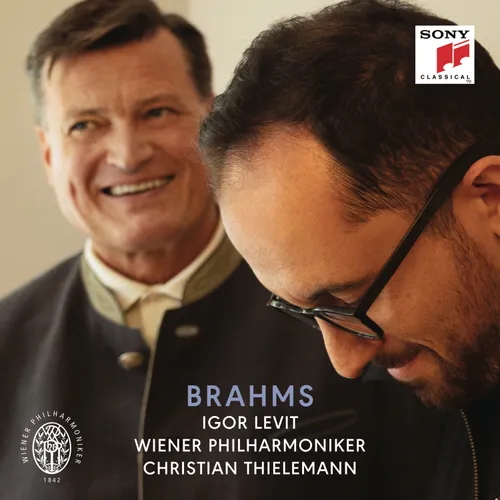by Stephanie Manning

The first full week of November has arrived. Here’s a taste of what’s in store:
Starting mid-week, The Cleveland Orchestra kicks off their Beethoven Piano Concerto cycle featuring pianist Igor Levit. Oberlin Opera Theatre begins their performances of Jules Massenet’s Cendrillon, and No Exit presents the brass quintet Meridian Arts Ensemble in three different locations around the area.
For more information on these concerts and more, visit our Concert Listings.
NEW ALBUM RELEASES:
Some familiar names appear in the New York Times’ recap of recent classical albums. The first is Igor Levit, who joins The Cleveland Orchestra this week. The pianist’s latest release is the three-hour Brahms, with the Vienna Philharmonic and conductor Christian Thielemann — Zachary Woolfe praises Levit’s solos as “elegantly autumnal.”
Fellow pianist Marc-André Hamelin — described by David Weininger as “a virtuoso’s virtuoso” — makes his first foray into recording Beethoven with his Piano Sonatas Op. 106, “Hammerklavier,” and Op. 2 No. 3. You can hear him play Gershwin’s Rhapsody in Blue live with The Cleveland Orchestra later this month.
TODAY’S ALMANAC:
by Mike Telin
Today we remember composer, organist, pianist and teacher Gabriel Fauré, who died in Paris on 4 November 1924 at the age of 79. Recognized as one of the most influential French composers of his time, his musical style inspired many 20th-century composers. The Grove Dictionary of Music and Musicians, describes him as the most advanced composer of his generation in France, and notes that his harmonic and melodic innovations influenced the teaching of harmony for later generations.
Born in Pamiers, Ariège, in the south of France on May 12, 1845, his musical talents were revealed while he was still a boy. As a nine-year-old he was sent to the Ecole Niedermeyer music college in Paris, where he was trained to be a church organist and choirmaster. It was there that he met Camille Saint-Saëns, who would become a lifelong friend.
Following his graduation Fauré earned his living as an organist and teacher — leaving him little time for composition. He would later hold the post as organist of the Église de la Madeleine and go on to become the director of the Paris Conservatoire.
Fauré was a founding member of the Société Nationale de Musique, formed in 1871 with the mission of promoting new French music. The membership included Romain Bussine, Saint-Saëns, Georges Bizet, Emmanuel Chabrier, Vincent d’Indy, Henri Duparc, César Franck, Édouard Lalo and Jules Massenet.
Maurice Ravel dedicated his String Quartet to Fauré, a respected teacher and mentor. Even after his retirement from the Conservatoire at the age of 75, he continually made himself available to young composers, including members of Les Six.
In a centenary tribute the musicologist Leslie Orrey wrote in The Musical Times that Fauré’s music is “More profound than Saint-Saëns, more varied than Lalo, more spontaneous than d’Indy, more classic than Debussy, Gabriel Fauré is the master par excellence of French music, the perfect mirror of our musical genius.”
Perhaps Fauré’s most well-known work is his Requiem Op.48. Click here to listen to Robert Shaw lead the Atlanta Symphony Orchestra and Chorus with Judith Blegen (soprano) and James Morris (baritone).


